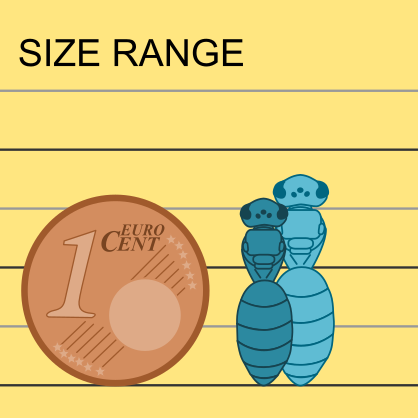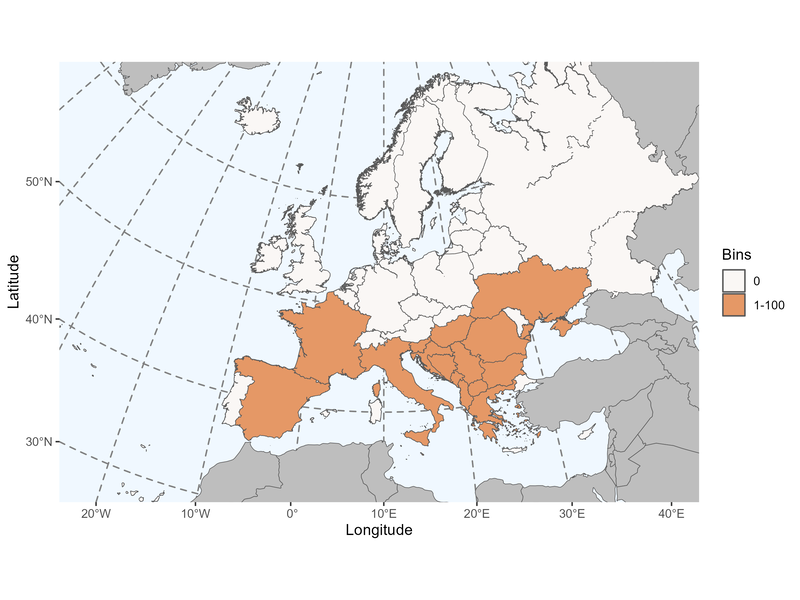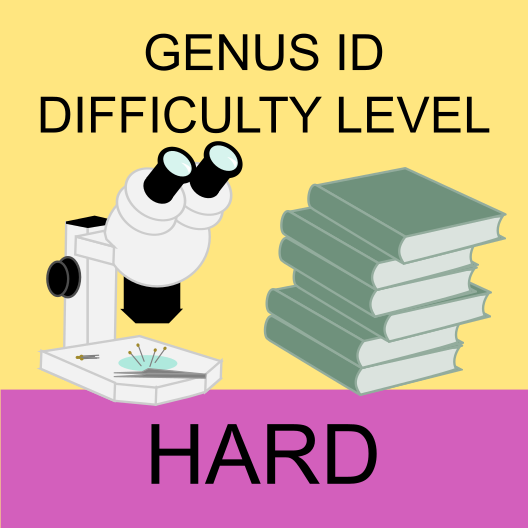Author: Smith, 1854
|
Type species: Habrophora ezonata Smith, 1854 = Tetralonia tarsata Spinola 1838, by designation of Patton 1879.
Synonyms: Habrophora Smith, 1854; Emphoropsis Ashmead 1899; Meliturgopsis Ashmead, 1899; Psithyrus Frison, 1927 (misuse of Psithyrus, a subgenus of Bombus) |
Clade: Anthophila
Family: Apidae SubF: Anthophorinae Tribe: Anthophorini |
|
Distinctive traits
|
Pictures of distinctive traits
|
Morphologically close genera, and how to distinguish them:
Anthophora & Amegilla species have a distinctly short marginal cell, as well as recurrent veins reaching the middle of submarginal cell 2 and an interfurcal nervulus.
Bombus species have aligned ocelli, never bear yellow-markings on the face and have a vein half-crossing the 1st submarginal cell.
- Habropoda - Amegilla & Anthophora
Anthophora & Amegilla species have a distinctly short marginal cell, as well as recurrent veins reaching the middle of submarginal cell 2 and an interfurcal nervulus.
- Habropoda - Bombus
Bombus species have aligned ocelli, never bear yellow-markings on the face and have a vein half-crossing the 1st submarginal cell.
General comments on Habropoda species identification
Habropoda females ae difficult to distinguish, but males can be sorted using the protrusion on anterior coxae.
Habropoda females ae difficult to distinguish, but males can be sorted using the protrusion on anterior coxae.
Sorry, but the species identification tool is not yet available for Habropoda.
Please check the reference(s) at the bottom of the page for traditional keys.
Please check the reference(s) at the bottom of the page for traditional keys.
List of the 3 Habropoda species found in Europe (Ghisbain et al. 2023):
Habropoda ezonata Smith, 1854
Habropoda tarsata (Spinola, 1838)
Habropoda zonatula Smith, 1854
Habropoda ezonata Smith, 1854
Habropoda tarsata (Spinola, 1838)
Habropoda zonatula Smith, 1854
References with identification keys for some of the species:
- Schwarz M. & Gusenleitner F. 2001. Beitrag sur Kenntnis paläarktischer Anthophorini und Habropodini (Hymenoptera: Apidae). Entomofauna, 22(6) : 53-92.
Page contributors:
You noticed a mistake? You have a suggestion to improve this page?
Don't keep it to yourself, contact us and become a contributor to IDmyBee!
References used to write this page:
- Adrien Perrard (Dec. 2023)
- Adrien Perrard (Dec. 2019)
You noticed a mistake? You have a suggestion to improve this page?
Don't keep it to yourself, contact us and become a contributor to IDmyBee!
References used to write this page:
- Bossert, S., E. Murray, E.A.B. Almeida, S. Brady, B. Blaimer, B.N. Danforth (2018). Combining transcriptomes and ultraconserved elements to illuminate the phylogeny of Apidae. Molecular Phylogenetics and Evolution 130 (2019): 121–131
- Ghisbain, G., Rosa, P., Bogusch, P., Flaminio, S., Le Divelec, R., Dorchin, A., Kasparek, M., Kuhlmann, M., Litman, J., Mignot, M., Müller, A., Praz, C., Radchenko, V.G., Rasmont, P., Risch, S., Roberts, S.P.M., Smit, J., Wood, T.J., Michez, D. & Reverte, S. (2023). The new annotated checklist of the wild bees of Europe (Hymenoptera: Anthophila). Zootaxa, 5327(1), 1-147.
- Michener, C.D. 2007. The Bees of the World, 2nd Edition. The John Hopkins University Press, Baltimore.
- Michez D., Rasmont P., Terzo, M., Vereecken, N. 2019. Abeilles d'Europes. Hymenoptères d'Europes, Volume 1. N.A.P. Editions.
- Nieto, A., Roberts, S. P., Kemp, J., Rasmont, P., Kuhlmann, M., García Criado, M., ... & Michez, D. 2014. European red list of bees. Luxembourg: Publication Office of the European Union, 98. (IUCN 2014)
- Rasmont, P., Devalez, Jelle, Pauly, A., Michez, D. & Radchenko, V.G. 2017. Addition to the checklist of IUCN European wild bees (Hymenoptera: Apoidea). Annales de la Société entomologique de France 53: 17-32.



